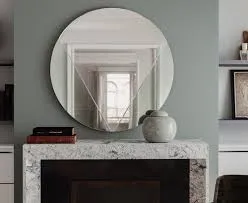

Understanding Tempered Laminated Glass Enhanced Safety and Versatility
Tempered laminated glass is a sophisticated building material that has gained widespread popularity due to its numerous advantages. Combining the strength of tempered glass with the resilience of a laminated structure, this type of glass serves as an ideal solution for various architectural and functional applications. This article aims to explore the characteristics, benefits, and uses of tempered laminated glass, highlighting why it has become a material of choice for designers, architects, and construction professionals.
To define tempered laminated glass, we must first understand its components. Tempered glass, also known as toughened glass, is produced through a process of extreme heating and rapid cooling. This process increases the glass's strength against impacts and thermal stresses, making it significantly more durable than standard glass. Laminated glass, on the other hand, consists of multiple glass layers bonded together with an interlayer, typically made of polyvinyl butyral (PVB). When combined, tempered laminated glass exhibits the best properties of both types — remarkable strength and safety.
One of the key advantages of tempered laminated glass is its safety. In the event of shattering, tempered glass breaks into small, blunt pieces that are less likely to cause injuries. Moreover, the interlayer in laminated glass holds the broken pieces in place, preventing fragments from scattering. This characteristic is particularly vital in applications such as balustrades, facades, and skylights, where safety is paramount. Consequently, tempered laminated glass is an essential material in building codes requiring safety glazing.
In addition to safety, tempered laminated glass offers significant acoustic insulation properties. The interlayer effectively dampens sound, making it an excellent choice for homes and commercial buildings located in noisy environments. For instance, urban developments or structures situated near highways can significantly benefit from using tempered laminated glass to create a quieter indoor atmosphere.

Another remarkable benefit is UV protection. The interlayer in laminated glass can block up to 99% of harmful ultraviolet (UV) rays, which helps protect interior furnishings from fading and damage caused by sun exposure. This is particularly advantageous for buildings with large glass facades or windows that receive direct sunlight for extended periods.
Energy efficiency is a pressing concern in modern architecture, and tempered laminated glass contributes to this goal. By combining different glass types and coatings, manufacturers can produce high-performance glazing solutions that enhance thermal insulation. This reduces the need for heating and cooling, leading to lower energy consumption and cost savings over time. As the world moves towards greener building practices, the energy-efficient properties of tempered laminated glass make it a relevant choice for eco-conscious projects.
Furthermore, the aesthetic appeal of tempered laminated glass is undeniable. Available in various colors, tints, and finishes, it can be designed to complement any architectural style. Whether used in contemporary office buildings, elegant residences, or striking commercial spaces, tempered laminated glass can elevate the visual appeal and provide a sleek, modern look.
In conclusion, tempered laminated glass stands out as a material that embodies strength, safety, and versatility. Its unique characteristics make it suitable for a wide range of applications, from residential settings to commercial architectures. By incorporating the best features of tempered and laminated glass, it meets the demands of modern design while ensuring safety and energy efficiency. As the construction industry continues to evolve, tempered laminated glass will likely play a crucial role in shaping the future of architectural glass applications, offering solutions that are not only functional but also visually striking.